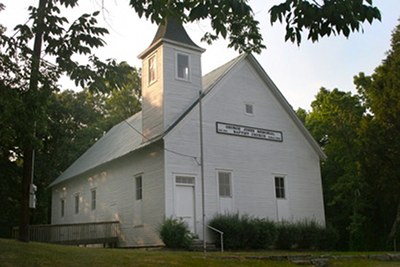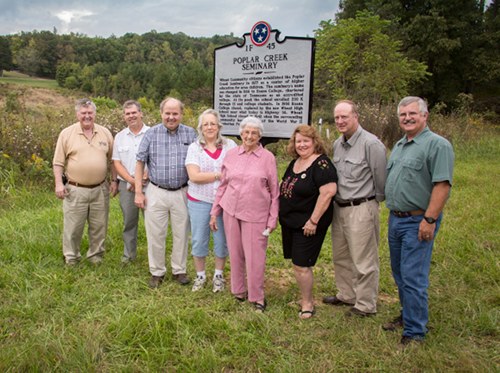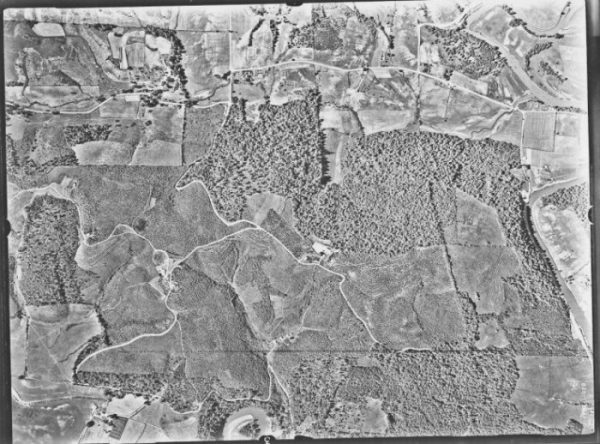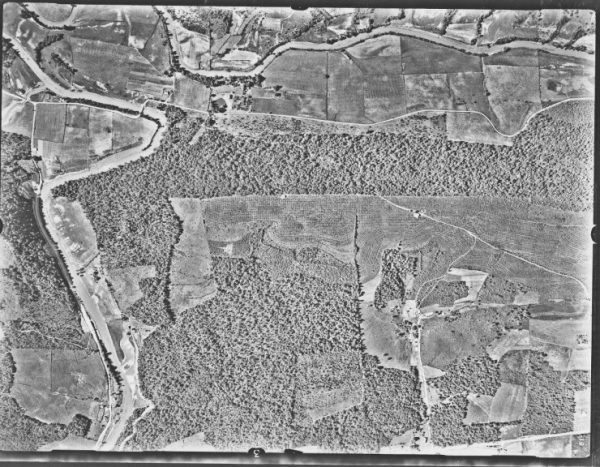
A historical marker for the Poplar Creek Seminary is pictured above near State Route 58 in the former Wheat community in west Oak Ridge. The George Jones Memorial Baptist Church is in the background. (Submitted photo)
We’ve been thinking recently that maybe we should run an occasional feature called “Did you know?” on Oak Ridge Today that would highlight interesting facts about Oak Ridge that might not be widely known. This could be information that makes the city unique or unusual, but doesn’t normally fit into a news story. Many of these could be history-related facts, but they wouldn’t all have to be.
Here’s an example from the K-25 History Center unveiling celebration last week:
Did you know that the Wheat community in what is now west Oak Ridge was once famous for its peach orchards? The peaches were sold across the country, according to Mick Wiest, president of the Oak Ridge Heritage and Preservation Association.
Besides its peaches, Wheat was also famous for its schools and education, Wiest said during a Thursday ceremony for the K-25 History Center at the East Tennessee Technology Park, the former K-25 site.
On Tuesday, Steve Goodpasture, a UCOR environmental scientist who is helping collect and care for K-25 artifacts, said there were seven major peach orchards in Wheat.
He said most everyone had peach orchards or apple orchards to use for personal canning. The larger orchards were money-making. There was a company in Dyllis called the Dyllis Orchard Company, which had the largest peach orchard in Wheat, Goodpasture said.
The second-largest peach orchard was called Highland, and it covered roughly 300 acres. The Highland orchard had several thousand trees in it, Goodpasture said. It was on the south side of Black Oak Ridge, which is the ridge line on the north side of Oak Ridge. It was near K-25 near the area that is now Hartland Estates, which is on the north side of Black Oak Ridge.
Don Watson was a boy in the mid-1930s in Wheat, and he had worked in the peach orchards before joining the Army, Goodpasture said. One year, Watson wanted to find out where the peaches were going, so he put self-addressed envelopes in a few of the bushel baskets and asked “where are you?” and “how much did you pay for the peaches?” One person responded that they were in Slate, Wisconsin, and they had paid $3 for a bushel of peaches, Goodpasture said.
He said that Bonita Irwin, who grew up in Wheat, said anyone who wanted a job during peach harvest could get one, including to pick, sort, or pack peaches.
The peaches would be packed and taken to Dyllis, which is on the other side of Black Oak Ridge in Roane County west of Oliver Springs. There was a railroad head there, and the peaches would be shipped to a company in Cincinnati, Ohio. Those were mostly Grade A peaches.
Peaches with blemishes were taken to the farmer’s market on Western Avenue in Knoxville, Goodpasture said.
So why not name the community “Peach” instead of “Wheat”?
“It wasn’t because they grew wheat,” Goodpasture said, although wheat and corn were grown in the area.
The community is named Wheat because the last name of the man who set up the post office in 1881 was Wheat. His name was Franklin Wheat, Goodpasture said.
A few reminders of Wheat remain today. One is the George Jones Memorial Baptist Church near the intersection of State Route 58 and Blair Road, just east of K-25. There is also a historical marker for Poplar Creek Seminary along State Route 58. There is a marble monolith near the George Jones Memorial Baptist Church to commemorate the Crawford Cumberland Presbyterian Church and the Poplar Creek Seminary, Roane College, and Wheat High School.
There are several cemeteries in the area as well.
There is a Wheat ticket booth once used by the Secret City Excursion Train at East Tennessee Technology Park, the former K-25 site, but there was not originally a railroad in Wheat and the ticket booth was not originally part of Wheat. In fact, it was a security guard post, Goodpasture said.
Wheat was one of the communities displaced when Oak Ridge and its three large federal sites—K-25, Y-12, and X-10 (now Oak Ridge National Laboratory)—were quickly built during World War II to help make the world’s first atomic weapons as part of the top-secret Manhattan Project. Besides Wheat, other large communities in the area before the Manhattan Project included Elza, New Hope, Robertsville, and Scarboro.
Wheat was once a farming community of about 1,000 people, and it had a elementary and high school and Roane College.
The Manhattan Project displaced a total of roughly 3,000 people on 1,000 farms on the 59,000 acres that later became Oak Ridge.

Bonita Irwin, who was born and raised in the former Wheat community, poses with a picture of the Wheat elementary and high school in August 2015. She graduated from Wheat High School in 1940 and said the farming community once had about 1,000 people. (Photo by John Huotari/Oak Ridge Today)

The George Jones Memorial Baptist Church in the former Wheat community in west Oak Ridge is listed on the National Register of Historic Places. (Photo courtesy Oak Ridge Heritage and Preservation Association)

A historical marker honoring the Poplar Creek Seminary was unveiled in the Wheat community in west Oak Ridge on Wednesday, Oct. 2, 2013. Pictured above from left are Ray Smith, Mick Wiest, Martin McBride, Anne McBride, Bonita Irwin, Bobbie Martin, Billy Stair, and Steve Goodpasture. (Submitted photo)
More information will be added as it becomes available.
Do you appreciate this story or our work in general? If so, please consider a monthly subscription to Oak Ridge Today. See our Subscribe page here. Thank you for reading Oak Ridge Today.
Copyright 2017 Oak Ridge Today. All rights reserved. This material may not be published, broadcast, rewritten, or redistributed.


Leave a Reply